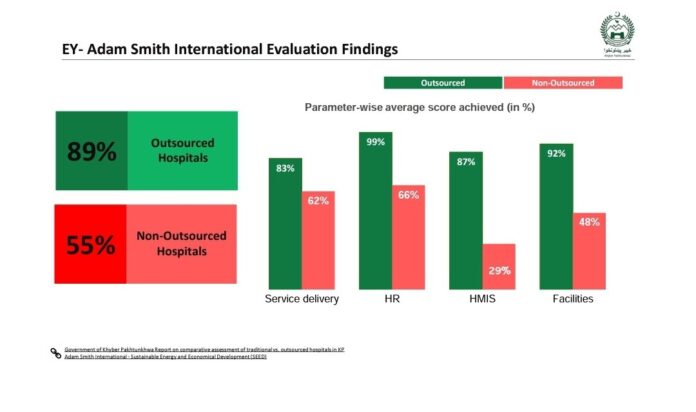On 3rd July 2023, the KP government released funds to 15 out of 19 outsourced hospitals. after lapse of six months. The majority of these hospitals had not received funds since October 2022, due to which staff was either on partial strike or resigned for want of salaries. (DAWN News)
In a Twitter post, Taimur Khan Jhagra, Former Provincial Minister of Khyber Pakhtunkhwa for Finance, expressed his gratitude over the long-standing issue of getting funding for the outsourced hospitals in ex-FATA & the backward areas of KP. He highlighted how the public sector in Pakistan has a service delivery problem with the following points below:
- Schools, hospitals & other services don’t work, in particular in peripheral areas, because staffing, performance & accountability mechanisms are dysfunctional & budgeting processes are cumbersome.
- Doctors in a centralised system, with no performance and accountability, are getting jobs for life, which means the traditional health system is bound to under-deliver. Doctors in a flawed, unified G1-22 system are bound to be underpaid significantly versus their market value.
- As a result, doctors with govt jobs develop private practices on the side. Then, they resist transfers outside of the cities where their private practices are; & it becomes impossible to send health staff to remote rural areas – the case across Pakistan.
- Similarly, traditional public sector budgets are so focused on paying salaries, pensions & new projects, that there remains no funding for the operational costs of service delivery in schools & hospitals. Unless by exception, public sector hospitals have no budgets to run well.
- Much of that was changed in public sector hospitals despite reform resistance; staffing; operational budgeting; but changing mindsets requires time. Hospital administrators (MSs) were still fearful of taking financial decisions for fear of accountability, with good reason.
- In short, over 75 years, we created a system where almost anyone can stop work from happening, but no one has the authority to make change happen. More than anything, outsourcing hospitals that don’t work helped change that at speed.
- The before and after comparisons presented after a third-party audit show how quickly hospital infrastructure changed in the most remote areas of the province; North & South Waziristan, Bajaur, Mohmand, Khyber, Orakzai, Kurram, and Kohistan.
- Staffing improved dramatically. From: 5 to 157 specialists, 86 to 182 medical officers, 58 to 163 nurses, and 84 to 318 paramedics.
- Clinical service delivery also improved massively, despite teething problems. Diagnostics, OPDs, Emergency figures, deliveries, surgeries – figures for all of these went through the roof, across both phases of outsourcing.
- Almost all of Pakistan’s old secondary and primary healthcare systems are dysfunctional, with less flow of patients resulting in a high cost per patient. However, after outsourcing, the cost per patient decreased by 2.6x as hospitals started to operate.
- Compared with public sector hospitals, outsourced hospitals had an average performance score of 89% vs. 55% for public sector hospitals. Of the 19 hospitals evaluated after the PTI govt, 18 were well above the average score for public-sector hospitals.
- All of these figures are from those presented to the caretaker govt after the dissolution of the provincial assembly and the PTI provincial govt.
- Like any change, this was opposed by vested interests in the health sector and the bureaucracy. Payments to providers stopped despite contracts, and an accountability witch-hunt started.
- Anyone with knowledge of the Health Foundation board members would know of their integrity and professional competence. But it seemed more important to achieve political objectives of accountability, than to make govt work for the people.
Regardless, Jhagra concluded his tweet by stating how great it is to now see these hospitals funded again. Outsourcing services in government has to be one of the key solutions in Pakistan to get service delivery right, involving the private sector in government, and encourage private sector investment.




